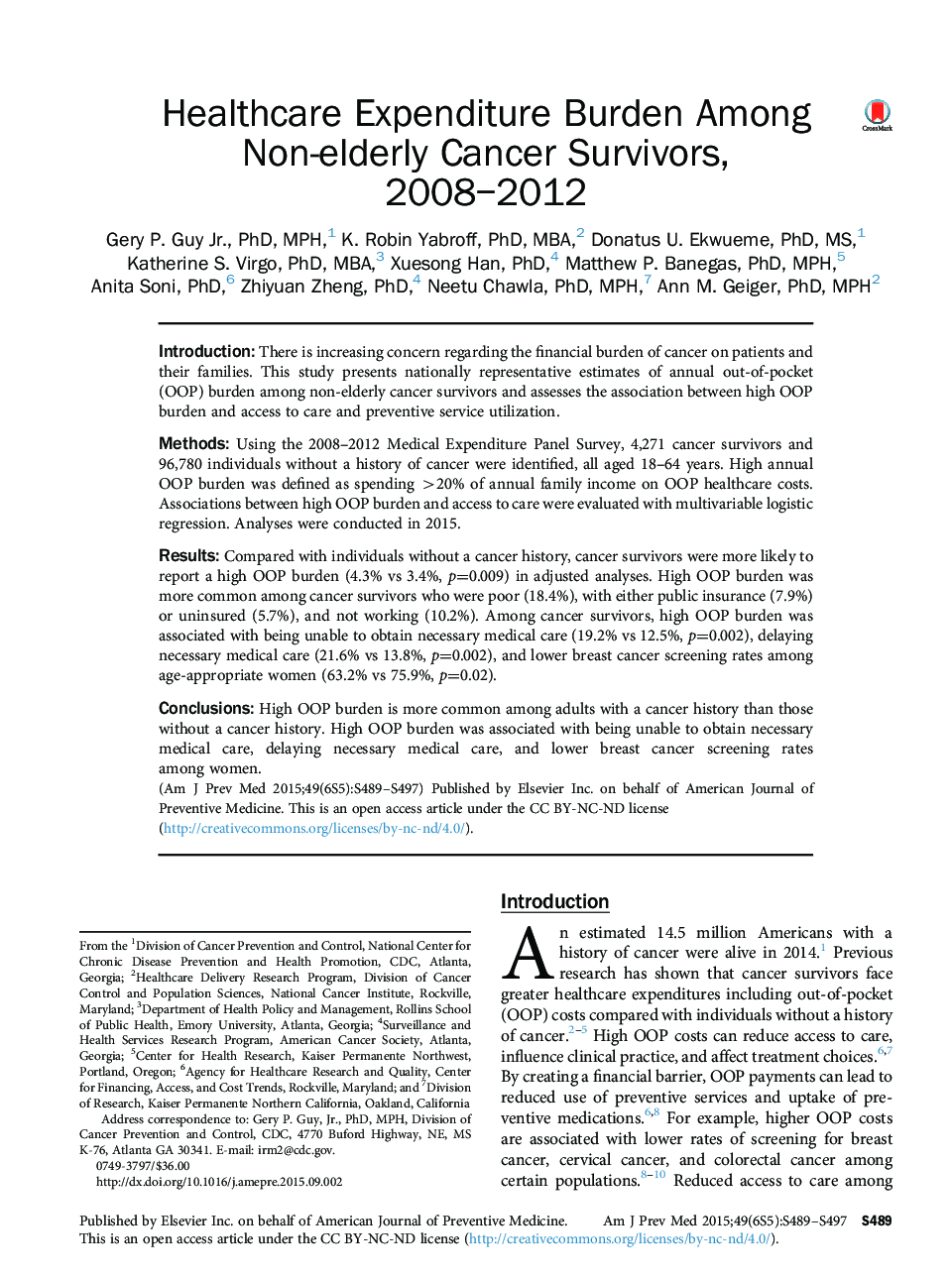| Article ID | Journal | Published Year | Pages | File Type |
|---|---|---|---|---|
| 4192031 | American Journal of Preventive Medicine | 2015 | 9 Pages |
IntroductionThere is increasing concern regarding the financial burden of cancer on patients and their families. This study presents nationally representative estimates of annual out-of-pocket (OOP) burden among non-elderly cancer survivors and assesses the association between high OOP burden and access to care and preventive service utilization.MethodsUsing the 2008–2012 Medical Expenditure Panel Survey, 4,271 cancer survivors and 96,780 individuals without a history of cancer were identified, all aged 18–64 years. High annual OOP burden was defined as spending >20% of annual family income on OOP healthcare costs. Associations between high OOP burden and access to care were evaluated with multivariable logistic regression. Analyses were conducted in 2015.ResultsCompared with individuals without a cancer history, cancer survivors were more likely to report a high OOP burden (4.3% vs 3.4%, p=0.009) in adjusted analyses. High OOP burden was more common among cancer survivors who were poor (18.4%), with either public insurance (7.9%) or uninsured (5.7%), and not working (10.2%). Among cancer survivors, high OOP burden was associated with being unable to obtain necessary medical care (19.2% vs 12.5%, p=0.002), delaying necessary medical care (21.6% vs 13.8%, p=0.002), and lower breast cancer screening rates among age-appropriate women (63.2% vs 75.9%, p=0.02).ConclusionsHigh OOP burden is more common among adults with a cancer history than those without a cancer history. High OOP burden was associated with being unable to obtain necessary medical care, delaying necessary medical care, and lower breast cancer screening rates among women.
